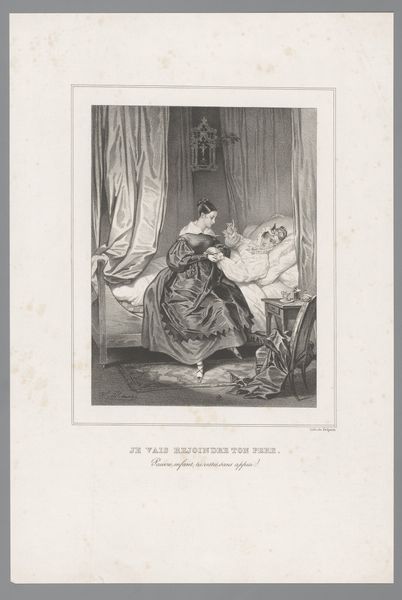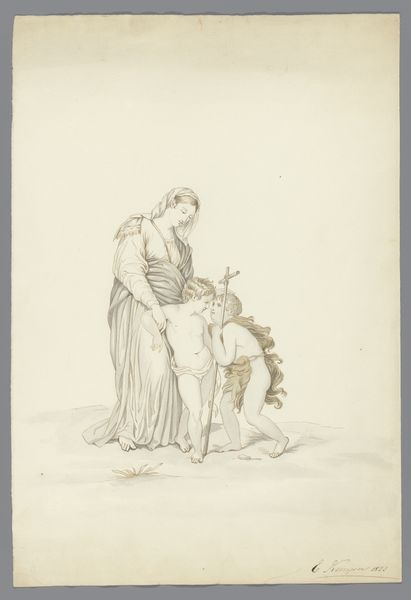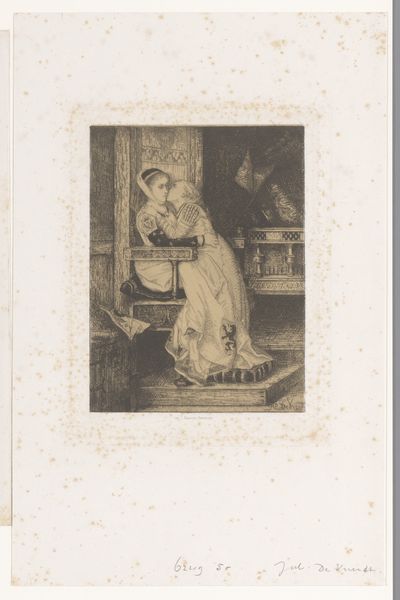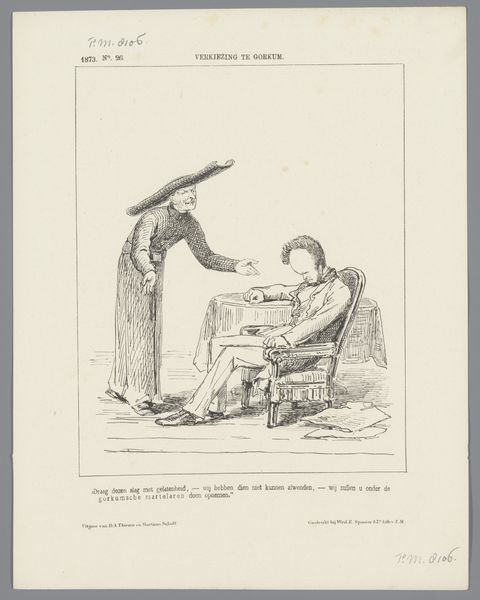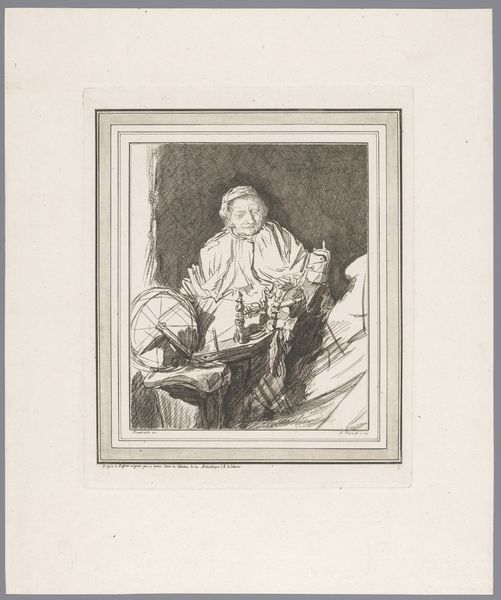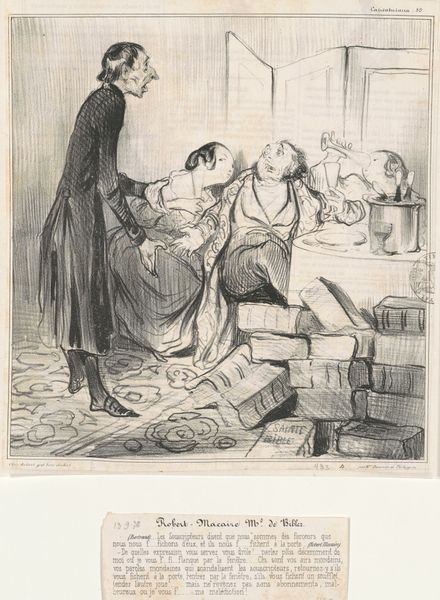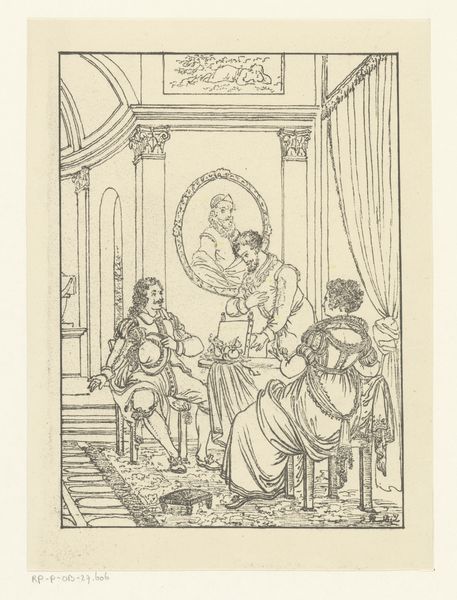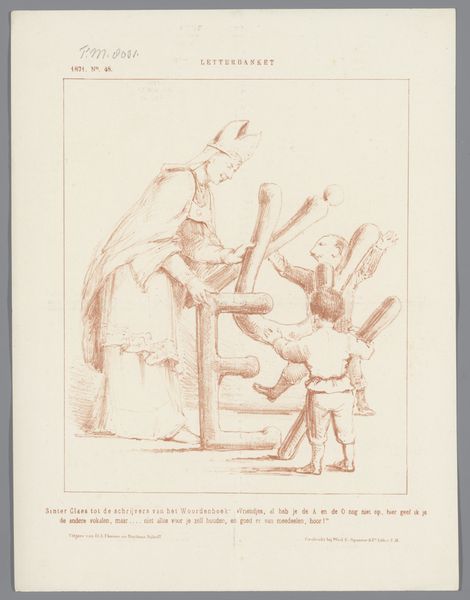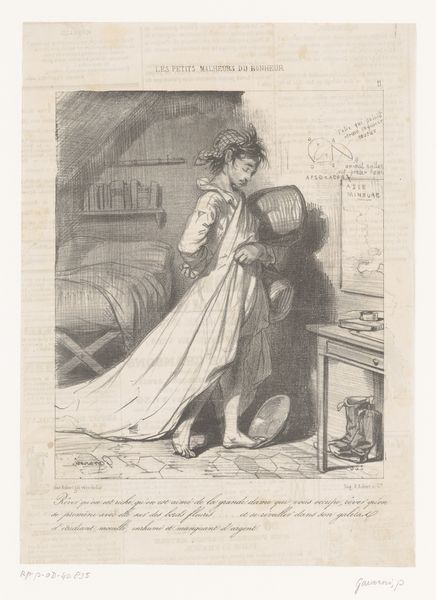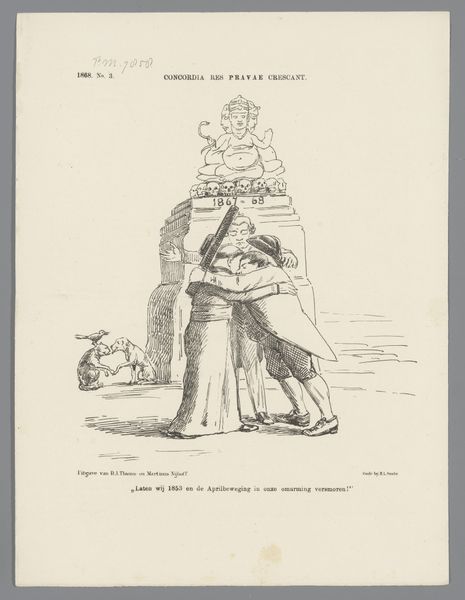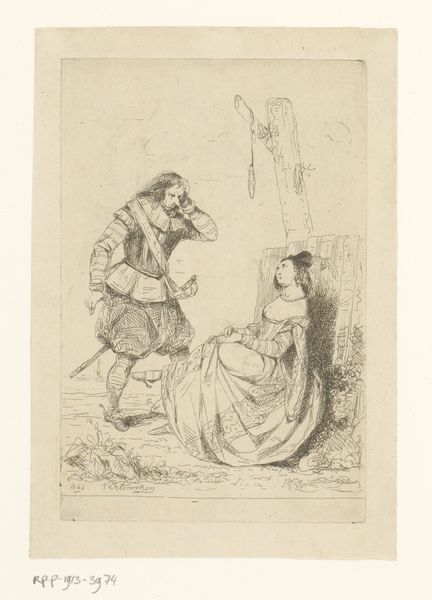
Spotprent op de door Heemskerk ingediende wetsontwerpen op de staatsspoorwegen en het kiestabel, 1875 1875
0:00
0:00
drawing, print, engraving
#
drawing
#
comic strip sketch
#
quirky sketch
# print
#
sketch book
#
cartoon sketch
#
personal sketchbook
#
sketchwork
#
ink drawing experimentation
#
sketchbook drawing
#
genre-painting
#
storyboard and sketchbook work
#
sketchbook art
#
engraving
Dimensions: height 275 mm, width 215 mm
Copyright: Rijks Museum: Open Domain
Editor: This is a political cartoon called "Spotprent op de door Heemskerk ingediende wetsontwerpen op de staatsspoorwegen en het kiestabel," created in 1875, likely an engraving or print. The caricature and strong lines give it a satirical feel. What do you make of the visual elements in play here? Curator: Let us begin with the composition. Notice how the artist employs a stark contrast between the single figure pushing the stroller and its occupants. The single figure of apparently Heemskerk with the enlarged head is depicted as severe, facing the Chamber, in contrast to the 'kieslabel' or electoral system' in the carriage. The structure of lines in the print guides our focus to these central elements, creating an interesting juxtaposition. Editor: I see that. The contrast does draw the eye to those babies in the carriage, labeled ‘KIestabel’. But I’m wondering, what is the significance of this exaggerated caricature, the children, and even the steam engine toy? Curator: Consider the semiotics at play. The caricature distorts reality, inviting us to interpret the personae with skepticism. The figures, though rendered as children, have distinctly aged and corrupt facial features which seems critical of their innocence. The ‘kieslabel’ itself becomes a symbol for nascent but flawed power structures. Editor: So, it's more about the statement on power and corruption rather than a simple representation? Curator: Precisely. The artist uses line and form to create a visual language around the manipulation inherent to politics. Even the ‘road to the chamber’ or ‘op weg naar de kamer’ is constructed, bounded as if confined or guided – do you see it that way too? Editor: I do, it is a cynical piece that definitely reveals meaning through the formal choices the artist makes. Thanks! Curator: Indeed, through these formal elements we unlock a deeper layer of commentary, reflecting a critical stance towards political maneuvers and power dynamics within society.
Comments
No comments
Be the first to comment and join the conversation on the ultimate creative platform.
